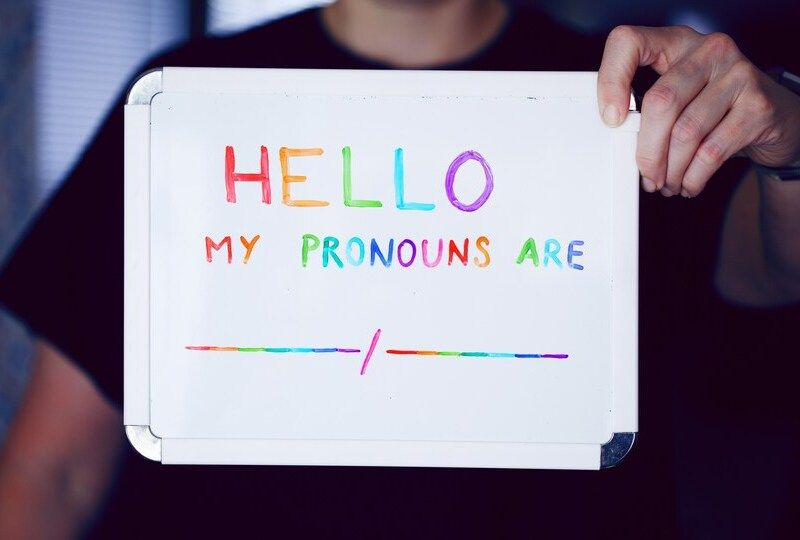Spanish Personal Pronouns: Tú, Usted, Vos, Vosotros and More

Understanding personal pronouns to define the subject of our conversations is an essential part of effective communication in Spanish. When learning, it’s important to think about the pronouns you’ll use to describe yourself and how you may possibly address others. There are variations in pronoun usage across different regions of the Spanish-speaking world, and they contribute to the Spanish language, making it the diverse language we know and love today. In this article, we will explore the nuances of formal and informal personal pronouns in different Spanish-speaking regions, highlighting distinctions between the areas. I will also briefly touch on the intricacies of gender pronouns in Spanish, which is a gendered language that is based on the binary masculine/feminine system. It may seem like a lot to remember at first, but with practice, you’ll have it down in no time!

Personal Pronouns in the Andes and Mexico
We will begin our linguistic journey in the Andes region. This is an area that encompasses the countries of Peru, Chile, Bolivia, and Ecuador. Although they are not technically located in the Andes, we will also include Colombia, Venezuela, and Mexico in this group since their pronoun usage is similar. In these countries, they make a distinction between tú and usted. Both of these words mean “you” and are used in the singular to address one person. Tú is informal. It can be used among peers, between friends, and for family members. Usted is formal. It can be used between colleagues, depending on the closeness of the relationship. It should always be used for a superior in the workplace, and it is considered a practice of good manners to use usted for the elderly. Usted can be used with anyone that the speaker does not have a close relationship with or to show respect to the person they are speaking to. All Spanish speaking countries regard tú as less formal than usted.

Personal Pronouns in Río de la Plata and Central America
Moving away from the Andes, we will explore the personal pronouns used in the Río de la Plata region. This area includes Argentina, Uruguay, and Paraguay. We will also include Central America in this section, as they have similar usage in personal pronouns. Central America includes the countries Guatemala, Honduras, El Salvador, Nicaragua, Costa Rica, and Panama. In all of these countries, the pronoun “vos” is used. It adds a layer of complexity because it also means “you” and is even more informal than tú, which we discussed previously. In these countries, vos can totally replace tú as the informal pronoun, or you’ll find a hierarchy where vos is the least formal, tú is in between, and usted is the most formal.

Personal Pronouns in Spain
Our exploration of personal pronouns continues with Spain, the birthplace of the Spanish language. Spain makes the same distinctions as most of South America with tú and usted being used as the informal and formal singular “you”. The additional distinction made in Spain is with the plural “you”. When speaking to a group of people, in Spain ustedes is used formally to mean “you all” while the term “vosotros” is for informal groups. Ustedes would be used in a workplace or professional setting or with the elderly. Vosotros is more common among groups of friends, peers, or family. Spain is the only country to make the distinction between vosotros and ustedes. In all other Spanish-speaking countries, ustedes is used for both formal and informal groups. Each subject pronoun comes along with its own set of verb endings, which can make it difficult for many people who go to Spain. Learning vosotros can entail taking on new verb endings in every tense, but with a little practice, it is possible to conquer vosotros!

A Note on Gender Pronouns in the Spanish-Speaking World
Spanish is a gendered language with masculine and feminine versions of all adjectives. This makes it challenging for gender non-conforming people to express themselves at times. The traditional third person pronouns in Spanish are él (he), ella (she), ellos (they for groups of men or mixed groups), and ellas (they for groups of women). There are people in Spanish speaking countries who decide to use the pronoun that matches their gender rather than the sex they were assigned at birth, and there are people who use both masculine and feminine pronouns interchangeably. In addition, the use of elle as a gender neutral pronoun now exists.
Because adjectives must match the gender of their subjects, this means that when using a masculine pronoun, the adjective will be masculine (typically ending with o or os), and when using a feminine pronoun, the adjective will be feminine (typically ending with a or as). When using the gender neutral elle, the adjective will typically end with e or es. Below is an example:
Las niñas guapas - The beautiful girls
Los niños guapas - The beautiful boys
Les niñes guapes - The beautiful children
Another trend popping up to aid in the visualization of diverse groups is the repetition of nouns. Traditionally, the masculine plural noun or pronoun can include women. For example, if I say los niños, it can be translated to “the boys” or “the children”. Repetition of nouns cals for saying both group names, so to say the children, we would say “los niños y las niñas”. People who argue for the repetition of nouns claim that women and girls are not represented in the current system. Those who favor the traditional system claim that in the rare occasion that context is not enough, simply clarifying who the group represents clears up confusion. They also point out that the repetition system makes language wordy and overly complicated. This also extends to pronouns. Ellos can represent mixed groups of men and women. For those who favor repetition as a means to representation, it would be “ellos y ellas”.
It is important to note that because of how ingrained gender is in the grammatical structure of Spanish, many are not in favor of a new system that they perceive as breaking the language. Others are more receptive to it. No matter where you go in the Spanish-speaking world, you’ll run into people who love and people who hate these new trends. A safe way to navigate in any country is to observe how people refer to themselves. If you expected someone to describe themselves as “alto” but they say “alta”, maybe they would appreciate being asked about their preferences.

Find the Formal and Informal Personal Pronouns that Work Best for Your Spanish!
As you navigate through the richness of the Spanish language, it’s important to find the right balance between formality and informality that suits your needs and communication style. Experiment with different pronoun combinations and explore the subtle variations between all of them. Whether you’re conversing in the Andes, Río de la Plata, Central America, or Spain, adapting your pronoun usage adds depth to your linguistic skills. Delving into the differences in pronoun usage across Spanish-speaking regions enhances your language proficiency and gives insight to the way communication has been shaped in these areas. Embrace the richness of Spanish culture as you explore the varied linguistic landscape of the Spanish-speaking world.